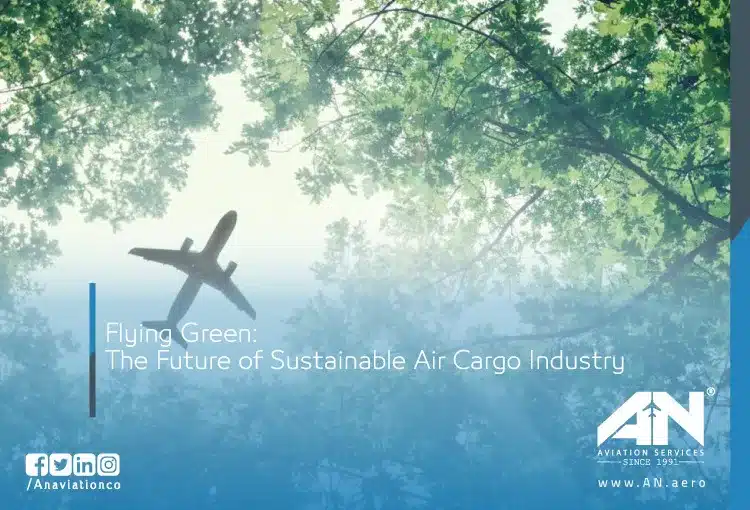
The air cargo industry has long been at the heart of global trade and logistics. With millions of goods transported across the globe daily, air cargo plays a vital role in supporting economies, ensuring supply chains remain efficient, and facilitating international trade. However, as the sector grows, so does its environmental impact. To tackle this challenge, the industry is embracing sustainable practices to combat climate change and meet global environmental targets.
The Environmental Impact of Air Cargo
Despite its efficiency, air cargo operations contribute significantly to global greenhouse gas emissions. The heavy reliance on conventional jet fuel, which is derived from fossil fuels, has raised concerns about the environmental sustainability of the industry. From fuel combustion to resource-heavy manufacturing processes, the carbon footprint of air cargo is substantial.
In fact, the air cargo sector’s emissions could grow exponentially without meaningful intervention. This reality has pushed industry leaders, governments, and organizations like the International Air Transport Association (IATA) to prioritize sustainability goals and explore innovative solutions to mitigate environmental damage.
Sustainable Aviation Fuels (SAF): The Game Changer
One of the most promising advancements in air cargo sustainability is the introduction of sustainable aviation fuels (SAF). Unlike traditional jet fuels, SAF is derived from renewable energy sources like cooking oil, municipal solid waste, and other biomass-based feedstocks. It is designed to reduce greenhouse gas emissions by up to 80% over the fuel’s lifecycle compared to conventional jet fuels.
Much air cargo operators are already incorporating SAF into their operations. SAF doesn’t require significant modifications to existing aircraft engines or infrastructure, making it an accessible and immediate solution for achieving sustainability goals.
Moreover, organizations like IATA are advocating for increased investment in SAF production and adoption, calling it the cornerstone for reducing aviation emissions and contributing to global environmental targets.
Lightweight Materials and Efficient Design
Another approach to improving sustainability in the air cargo industry is the development and use of lightweight materials in aircraft design. By reducing the weight of aircraft, less fuel is consumed during flights, leading to lower emissions. Innovations like composite materials and advanced aerodynamics are helping improve fuel efficiency while maintaining operational safety and performance.
Operational Efficiency: Cutting Down on Emissions
Beyond technological innovations, improving operational efficiency is crucial for reducing the environmental impact of air cargo operations. This includes optimizing flight routes, reducing fuel consumption during taxiing, and improving cargo loading efficiency. By integrating real-time monitoring systems and data analytics, cargo operators can identify inefficiencies and take corrective actions promptly.
Furthermore, advanced scheduling software and artificial intelligence (AI)-powered tools are transforming how cargo operations are managed, minimizing delays and maximizing resource utilization. These strategies help reduce not only costs but also emissions, making them a win-win for the industry and the planet.
The Role of Renewable Energy in Ground Operations
While much of the conversation focuses on reducing emissions during flights, ground operations also play a significant role in the air cargo industry’s environmental footprint. By adopting renewable energy sources, such as solar and wind power, for powering ground support equipment and airport operations, the industry can further reduce its carbon emissions. Electric ground vehicles, for example, are replacing diesel-powered alternatives at many major cargo hubs worldwide.
The Push for Industry-Wide Collaboration
Achieving sustainability in the air cargo industry isn’t just about individual companies making changes—it requires collaboration across the entire aviation sector. Governments, aviation organizations, manufacturers, and logistics companies must work together to establish regulations, invest in renewable energy infrastructure, and promote sustainable practices.
International agreements, such as CORSIA (Carbon Offsetting and Reduction Scheme for International Aviation), aim to ensure that the aviation industry grows responsibly while mitigating its climate impact. These frameworks encourage stakeholders to adopt solutions like SAF, carbon offsets, and fuel-efficient practices.
Meeting Global Sustainability Goals
The air cargo industry’s efforts to reduce its environmental footprint are directly tied to global sustainability goals, including those set by the Paris Agreement. With initiatives like transitioning to SAF, improving operational efficiency, and leveraging data-driven insights, the air cargo sector aims to cut emissions and contribute to a more sustainable future.
As the industry transitions, companies and stakeholders are adopting innovative solutions to balance their commitment to economic growth with their responsibility to the environment. These efforts include reducing emissions, improving fuel efficiency, and addressing sustainability challenges across supply chains.
Final Thoughts
The air cargo industry stands at the forefront of sustainable innovation, proving that economic growth and environmental responsibility can go hand in hand. By investing in renewable energy, adopting sustainable aviation fuels, and improving operational efficiency, the industry is paving the way for a greener, more efficient future.
Air cargo sustainability is no longer a luxury but a necessity to ensure the industry continues to thrive while protecting the planet. As the aviation industry aligns with global sustainability goals, “flying green” becomes not just a vision, but a reality that benefits businesses, consumers, and the environment.

